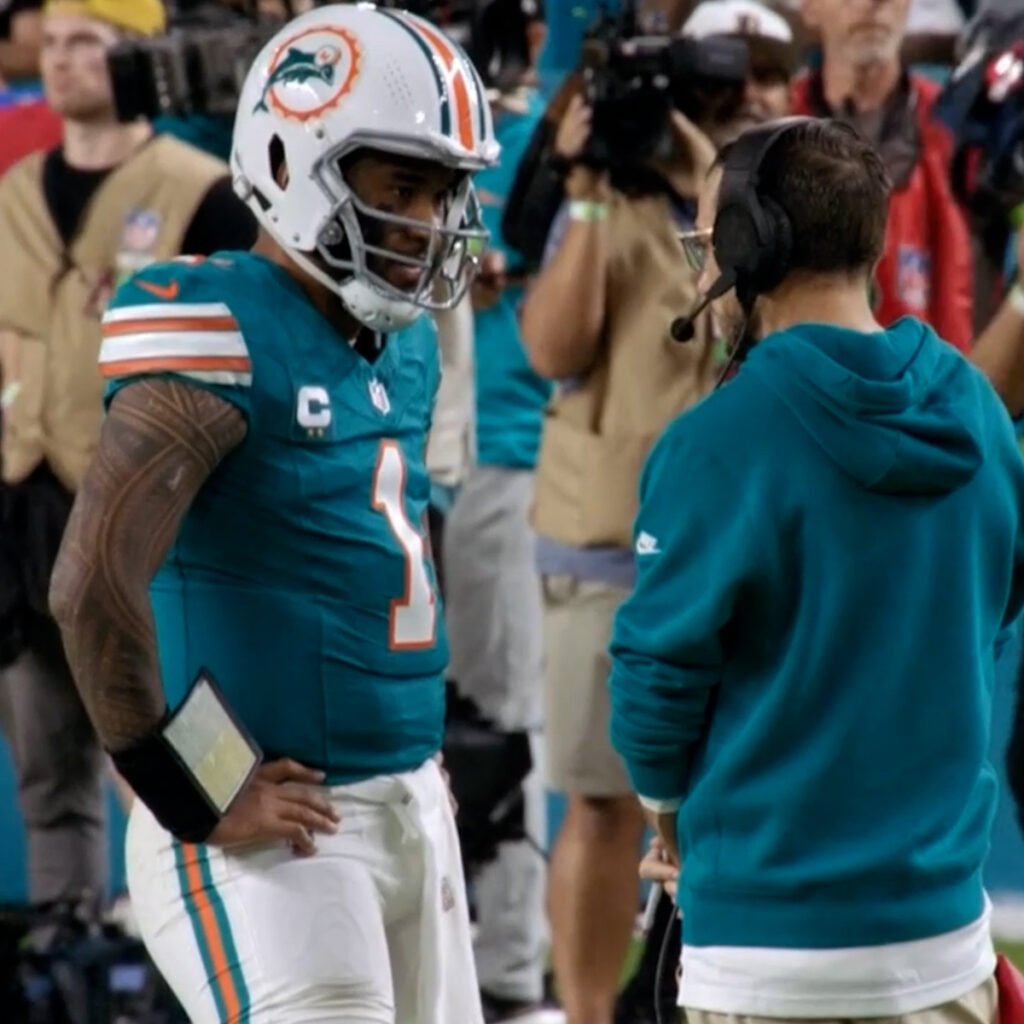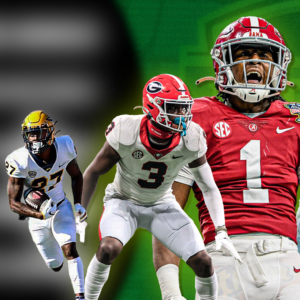During A.J. Brown’s interview after a two-week long hiatus, it was revealed that Jalen Hurts and A.J. improvised on the final play against Seattle. It resulted in a game ending interception. This flipped the whole play call narrative, as it turns out that Nick Sirianni and Brian Johnson weren’t intending for a deep shot on that play.
Something that should have restored some faith in the coaches turned into a debate about whether the players are doing their own thing because they don’t trust the play calls. Go figure.
In light of that situation, I thought this interaction between Dolphins QB Tua Tagovailoa and Head Coach and play caller Mike McDaniel was quite interesting.
A PLAYERS LEAGUE
This interaction should highlight that top players, especially quarterbacks, have a lot of control over their offenses. In game, the QB needs to communicate what he is seeing on the field to the coaches so that they can consider that input into their play calling. That way, the offense can get to plays that both the player and play caller feel comfortable running.
Good coordinators inherently try to build their offense around the strengths of their QBs. They want to build plays that the passer is comfortable executing, and the player needs to be able to communicate with his coaches about what kind of plays he likes to run. This relationship starts during offseason mini camps (or earlier) and continues through in-season game planning.
Do you think Peyton Manning or Tom Brady were playing in offenses where their input wasn’t strongly considered?
These aren’t high schoolers that have a limited knowledge of the sport, where the coaches experience heavily outweighs the players. These are players that have been playing the game of football for 15-20+ years. Some of the players are nearly as old as their coaches and coordinators. Top QBs have an incredible amount of freedom and control, built upon years of playing the game.
Again, in late game situations, do you think Manning wasn’t audibling to different plays during end of game scenarios when he got a look he liked? What about Brees? Mahomes? Burrow? When you give a QB a $250M contract, you signify that he has the trust from the organization to control the offense late in the game.
MCDANIEL’S SOCIAL AWARENESS
Another thing that struck me was the way Mike McDaniel acted in that situation. You could tell he wasn’t as confident about the play call as Tua was.
McDaniel, still undecided, went to interact with Tyreek Hill as the players are coming off the field during the timeout. Tua stepped in immediately and told Hill, “Don’t look at him [McDaniel].” He took control of the situation with conviction and McDaniel stepped away.
A coach with less social awareness and a bigger ego would likely step back in and retake control at some point. Coach McDaniel understands the importance of the situation. This is a big moment for Tua’s leadership; stepping up and taking control of the team during a critical moment in a pivotal game.
A respected player that takes a leadership role is always going to impact the team more than any coach can. No matter how good a coach is, they don’t create buy-in and commitment like Brian Dawkins or Ray Lewis.
This was a moment for Tua to lead his team and you can see how much Tyreek was committed to the play. During the full show on HBO, you can see Tyreek pass that leadership on during the next play when it was the offensive line’s turn to step up.
None of that happens without McDaniel giving Tua space to take control.
REVISITING THE SEAHAWKS ENDING
In regards to the specific play call, Sirianni shed some light on the game planning process. This is pretty standard, but he talked about how they communicate what plays they like against certain looks and in certain scenarios. They aim to give Jalen options so that he can get the offense into plays to take advantage of what the defense presents.
Let’s look at two 3rd down situations from Week 15 so we can see what some of those answers were against the Seahawks.
We can see that the Eagles had a play design that they wanted to run on third down against the Seahawks. They did a nice job presenting the plays in two different ways. They also showed that they had another answer (double move) they liked if they called that play and the defense presented an advantageous look.
Here’s where the play calling/player audible situation gets muddy though. The second time the Eagles ran the play, did Jalen and A.J. discuss that they wanted to run the out-and-up variation on the sideline? Did Jalen signal to A.J. pre-snap? Did Brian Johnson call the second variation? Did all three, and possibly Sirianni, discuss it together at some point?
That brings us to the last drive. Let’s look at two more plays.
In hindsight, we know that Jalen and A.J. tried to get aggressive on the last play. How does that effect how we feel and/or who we put the blame on for calling a shot play on 3rd & eight earlier in the game?
GROWING PAINS
When revisiting the play during the press conference, Sirianni also mentioned that the players need to know the scenario and what plays are ideal for those situations. In a scenario where the Eagles had two timeouts and enough time to get into field goal range, I don’t think Sirianni thought a double move was the ideal call for that situation.
This is a learning moment for Jalen. He’s an aggressive player by nature. He prefers deep passes vs intermediate throws and scrambling as opposed to checking the ball down. He’s been that way since he entered the NFL.
That fact is highlighted in his average throw depth ranking each year he’s been a pro:
- 2020 – 2nd
- 2021 – 6th
- 2022 – 15th
- 2023 – 10th
At 25, Jalen is still a young QB with room to grow, despite his incredible early career success. This is likely the most control he’s ever had over an offense.
Plays and moments like these are part of the growing pains. But no pain no gain, right? Insert another cliché.




